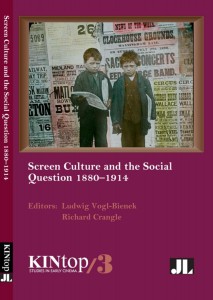Screen Culture and the Social Question, 1880-1914
Edited by Ludwig Vogl-Bienek and Richard Crangle


Average rating: ![]()
| 0 | rating | |
| 0 | rating | |
| 0 | rating | |
| 0 | rating |
Your rating: -
Book Presentation:
Public performances using the magic or optical lantern became a prominent part of the social fabric of the late 19th century. Drawing on a rich variety of primary sources, Screen Culture and the Social Question, 1880-1914 investigates how the magic lantern and cinematograph, used at public lectures, church services, and electoral campaigns, became agents of social change. The essays examine how social reformers and charitable organizations used the "art of projection" to raise public awareness of the living conditions of the poor and the destitute, as they argued for reform and encouraged audiences to work to better their lot and that of others.
About the authors:
Ludwig Vogl-Bienek is Senior Researcher of the Screen1900 research group at the University of Trier and a founding member of the magic lantern ensemble illuminago, which performs lantern shows internationally.Richard Crangle is Research Officer of the Magic Lantern Society.
See the publisher website: John Libbey Publishing
> From the same authors:
The Great Art Of Light And Shadow (2000)
Archaeology of the Cinema
by Laurent Mannoni and Richard Crangle
Subject: History of Cinema
> On a related topic:
Finding Birt Acres (2025)
The Rediscovery of a Film Pioneer
by Deac Rossell, Barry Anthony and Peter Domankiewicz
Subject: Silent Cinema
Screening Europe in Australasia (2024)
Transnational Silent Film Before and After the Rise of Hollywood
Subject: Silent Cinema
A History of Early Film Volume 2 (2023)
An Established Industry
Dir. Stephen Herbert
Subject: Silent Cinema
How the Movies Got a Past (2023)
A Historiography of American Cinema, 1894-1930
Subject: Silent Cinema